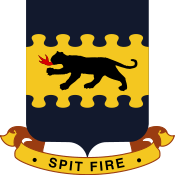Buford A. Johnson
| Buford A. Johnson | |
|---|---|
| Born |
August 30, 1927 Longview, Texas |
| Nationality | United States of America |
| Occupation | Military airplane mechanic |
| Known for | Tuskegee Airmen |
Master Sergeant Buford A. Johnson (born August 30, 1927) was a member of the famed group of African-American World War II pilots known as the Tuskegee Airmen.[1] During World War II, he served as the chief mechanic servicing the fighter planes of the 99th Fighter Squadron of the 477th Composite Group.[2]
Biography
Early life
Buford A. Johnson was born in Longview, Texas on August 30, 1927.[2][3] He was raised in Shiloh, Texas, graduating from the Shiloh High School in 1945.[3]
Military career

When Johnson was 18 years old, the U.S. Military drafted him into the U.S. Navy.[2] At the time, the only tasks that African-American men were allowed to do in the Navy were menial jobs, which he was not interested in doing. He learned that volunteering for a three-year tour of duty in the U.S. Army would supersede the draft orders, so Johnson instead enlisted in the U.S. Army Air Force in 1945.[3][1] He became one of the first African-Americans allowed to work on U.S. fighter aircraft.
Johnson did his Basic Training at Sheppard Field Texas. Upon graduating, he was assigned to the 99th Fighter Squadron of the 477th Composite Group which was stationed at Godman Field, Kentucky.[2]
After World War II, Johnson was stationed at Lockbourne AFB in Ohio and from there was transferred to Itazuke Air Base in Japan.[2] At Itaszuke, his orders were to support a P-51 Fighter Squadron; his abilities earned him the honor of being a mechanic on the 80th Fighter Bomber Squadron's first F-80C aircraft.[2] He became the first African-American to be a jet mechanic in the United States Air Force, a Crew Chief to work on jet aircraft, and a Crew Chief working on jet aircraft in a combat zone.[2]
Johnson was transferred out of the Korean War zone on 19 December 1951 and was assigned a month later to the 6520th Test Support Wing, Air Force Cambridge Research Center, on the Hanscom AFB in Bedford, Massachusetts as an Aircraft Maintenance Supervisor in January 1952.[2] He was promoted from Technical Sergeant to Master Sergeant on 1 April 1953.[2]
On 25 July 1956, Johnson received orders to transfer to the 50th Fighter-Bomber Wing in Toul-Rosieres Air Base in France, where he reported three weeks later on 15 August 1956.[2] He was assigned to the 417th Fighter Group.[2] On 29 July 1960, Johnson was transferred to the Air Force Test Center at Edwards Air Force Base, California.[2] During his time working with the 417th Tactical Fighter Squadron at Edwards Air Force Base, Buford received the Air Force Commendation Medal for Meritorious Service on 21 December 1962. [2]
He remained at Edwards Air Force Base until July 1965, at which point he received orders to transfer to Oxnard Air Force Base, California to take up the duties of Non-Commissioned Officer in Charge of Maintenance Control.[2]
Johnson retired in 1966.[4]
Awards
Individual awards
- U.S. Air Force Medal for Meritorious Service
- Letter of appreciation from the Department of Homeland Security California Service Center's Director Christina Poulos[3]
Group award
The Tuskegee Airmen were collectively awarded the Congressional Gold Medal for their service to their country on April 11, 2006. The original medal was given to the Smithsonian Institution and the individual members received replicas.
Notes/Further reading
- "Tuskegee Airmen Top Guns Celebrated A pilot and mechanic from the 1949 competition will speak at UC Riverside on Nov. 5". UCR Today. 27 October 2011. Retrieved 1 December 2013.
See also
References
- 1 2 "RIVERSIDE: Tuskegee Airman to speak at March museum". The Press-Enterprise. June 6, 2013. Retrieved 1 December 2013.
- 1 2 3 4 5 6 7 8 9 10 11 12 13 14 "Tuskegee Top Gun". Retrieved 1 December 2013.
- 1 2 3 4 Olano, Joseph A. (14 April 2010). "Retiree speaks of experiences as a Tuskegee Airman". Air Force Print News Today. Retrieved 1 December 2013.
- ↑ Parrilla, Leslie (15 August 2011). "RIVERSIDE: Tuskegee airman set records as black jet mechanic". The Press-Enterprise. Retrieved 1 December 2013.
External links
- Buford A. Johnson Chapter (Tuskegee Airmen, Inc.)
- Tuskegee Airmen Buford A. Johnson at the 43rd NAACP Image Awards (February 22, 2012)
- Tuskegee Airmen at Tuskegee University
- Tuskegee Airmen Archives at the University of California, Riverside Libraries.
- Tuskegee Airmen, Inc.
- Tuskegee Airmen National Historic Site (U.S. National Park Service)
- Tuskegee Airmen National Museum
Use
